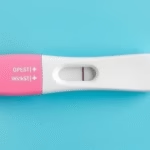Understanding Implantation Bleeding at 13 DPO
Implantation bleeding occurs when a fertilized egg attaches to the lining of the uterus. This process usually happens around 6 to 12 days after conception. If you are tracking your ovulation, implantation bleeding can be particularly significant. At 13 days past ovulation (DPO), women may start to wonder if they are pregnant. The timing of the test can be crucial for accurate results.
At this point, some women notice light spotting which is different from their menstrual cycle. Recognizing the difference between regular menstrual bleeding and implantation bleeding is essential. Implantation bleeding is typically lighter in color, brown or pink, and does not last long—usually only a few hours to a couple of days.
Many women eagerly await to take a pregnancy test at this stage. However, understanding the timing of the test can determine whether the results are accurate. A test taken too early may yield a negative result, even if pregnancy has occurred. Therefore, knowing more about implantation bleeding at 13 DPO and when to test is vital for those trying to conceive.
What is the Timing of Implantation Bleeding?
Implantation bleeding typically happens around 6 to 12 days after ovulation, which is when fertilization usually takes place. For women who have a regular cycle of 28 days, ovulation typically occurs around day 14. Therefore, implantation could take place as early as day 20 of the cycle. By 13 DPO, if you notice any spotting, it may be an indicator that implantation has already occurred.
This phase can be confusing, especially for women who are not tracking their cycles closely. Understanding how ovulation relates to days past ovulation can help clarify when implantation bleeding is most likely to occur.
Spotting at this time can be an early sign of pregnancy, but it is essential to evaluate other symptoms. If you’ve also missed your period, you might be eager to take a home pregnancy test soon after noticing the spotting.
However, giving it a couple of days after the bleeding can increase the accuracy of your test results.
Differences between Implantation Bleeding and Menstrual Bleeding
One of the most common concerns is distinguishing between implantation bleeding and the regular menstrual period. Understanding these differences can help in interpreting your body’s signals accurately.
Here are some notable differences between the two:
- Color: Implantation bleeding is often a lighter shade—pink or brown—whereas menstrual blood is usually red.
- Flow: The flow with implantation bleeding is significantly lighter, often described as spotting, while menstrual bleeding typically involves a heavier flow.
- Duration: Implantation bleeding lasts a shorter timeframe—hours to two days—compared to a typical period that lasts from three to seven days.
- Accompanying Symptoms: Implantation bleeding may not be accompanied by many symptoms. In contrast, menstruation usually includes cramps and other symptoms.
Recognizing these distinctions is vital for anyone suspecting pregnancy. Keeping a menstrual cycle diary can help you better track your cycles, which can ultimately help in understanding when implantation bleeding might occur.
When Should You Take a Pregnancy Test?
The right timing to take a pregnancy test can influence the results significantly. Testing too early may lead to a false negative, causing unnecessary stress and confusion. Typically, the best time to test is around the time of your missed period.
If you experience implantation bleeding at 13 DPO, it is generally advised to wait to test for at least two more days. By this time, sufficient levels of the hormone hCG (human chorionic gonadotropin) should be present in your urine if pregnancy has occurred.
Most at-home pregnancy tests are designed to detect hCG levels and are most accurate when taken after the first day of a missed period. Thus, waiting can offer a more reliable outcome.
However, if your cycles are irregular, or if you experience symptoms of pregnancy, testing sooner might be warranted. There are sensitive pregnancy tests available that can yield accurate results even a few days before your expected period.
Common Symptoms of Early Pregnancy
Before a positive test confirms pregnancy, many women report various symptoms which could help indicate their condition. Symptoms may vary from person to person but can include:
- Spotting: As noted, this can be an early sign of pregnancy.
- Cramping: Mild cramping may occur due to implantation.
- Breast Sensitivity: Hormonal changes can lead to heightened breast sensitivity.
- Nausea: Commonly referred to as morning sickness, can begin early for some women.
- Fatigue: Increased tiredness can often occur in early pregnancy.
Paying attention to these symptoms can help reinforce the possibility of pregnancy. Keeping a log of your symptoms and when they occur can support your understanding of your reproductive health.
Answering Common Questions about Implantation Bleeding
Understanding implantation bleeding and the timing of pregnancy tests leads to a number of common queries. Here are some frequently asked questions surrounding this topic:
How long does implantation bleeding last?
Implantation bleeding typically lasts from a few hours to a couple of days. It is generally shorter than a normal menstrual period.
Can I still get my period after experiencing implantation bleeding?
Implantation bleeding suggests pregnancy; however, some women may still experience light bleeding or spotting post-implantation, which is different from a regular cycle.
Why may my home pregnancy test show negative results when I suspect pregnancy?
This can be due to testing too early. hCG levels may not be high enough to detect until a few days after the expected period.
What should I do if I suspect I’m pregnant but test negative?
Wait a few days and retest, or consult your healthcare provider for more definitive testing.
Are there any additional signs of pregnancy I should look for?
Many women experience fatigue, mood swings, and food aversions. Each individual might experience different symptoms.
Final Thoughts
Understanding implantation bleeding, especially at the 13 DPO mark, is crucial for individuals trying to conceive. Recognizing the timing of implantation and the potential signs of pregnancy can guide when to take home pregnancy tests for the most reliable results.
Overall, implantation bleeding can often occur around the time a woman expects her next period, causing confusion. Understanding how to distinguish between the two is important; awareness of key signs such as color, flow, and duration can assist in this differentiation.
Timing for pregnancy tests plays a significant role in ensuring accurate results. It is often recommended to wait until after a missed period for optimal accuracy. Symptoms such as light spotting, cramping, breast tenderness, nausea, and fatigue can indicate pregnancy as well. However, women may experience various symptoms, and each experience can be unique.
Ultimately, knowledge is power. By understanding the signs of implantation bleeding and recognizing when to take a pregnancy test, individuals can make informed decisions about their reproductive health. Seek medical advice when uncertain, as healthcare providers can offer personalized guidance and support.
Further Reading
What Type of Psychotherapy Is Best for Anxiety?







